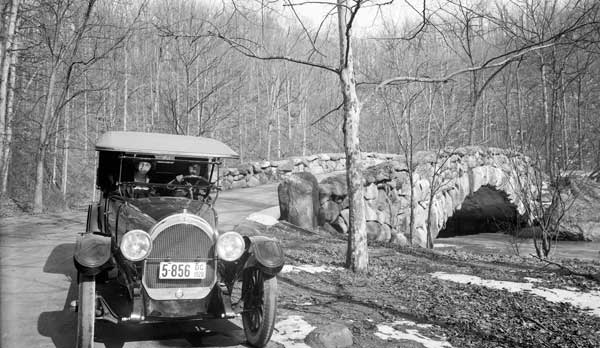
Roads constructed for no purpose other than the enjoyment of the journey became popular in Britain around 1800. That year marks the confluence of technical advances—in pavement and in carriages—and cultural and intellectual trends. The Romantic and picturesque movements in literature and art made people want to experience the countryside; an emerging theory of the landscape promoted road designs and layouts based on mobility.
The development of historic roads has been the focus of new research by Paul Daniel Marriott, an American preservation planner and landscape architect, and a second-year PhD candidate at the University of Edinburgh.
In the history of American pleasure roads, Marriott notes that:
– Central Park’s 1857 circulation system separating carriages from strollers was the country’s first significant contribution to the advancement of pleasure driving.
– Beach Drive in Rock Creek Park, begun in 1897, was part of a network of pleasure drives designed to make the nation’s capital more livable.
– The Bronx River Parkway in New York, begun in 1907, was the first parkway built specifically for automobiles.
– The Columbia River Highway in Oregon (1913–1922) became the model for roads in the national parks.
By the middle of the 20th century, Marriott says, “the qualities that made for pleasurable driving—limited access, separated-grade intersections, and good engineering—also made for good commuter roads.”
Marriott hopes his ongoing research will raise awareness of the design and innovations in pleasure drives that are worth preserving in themselves and that also helped shape the best qualities of the modern highway network.

